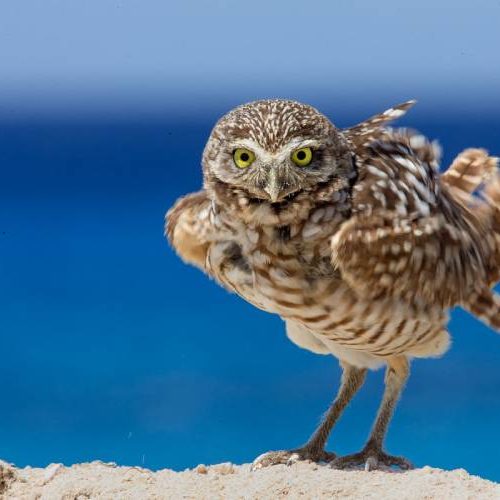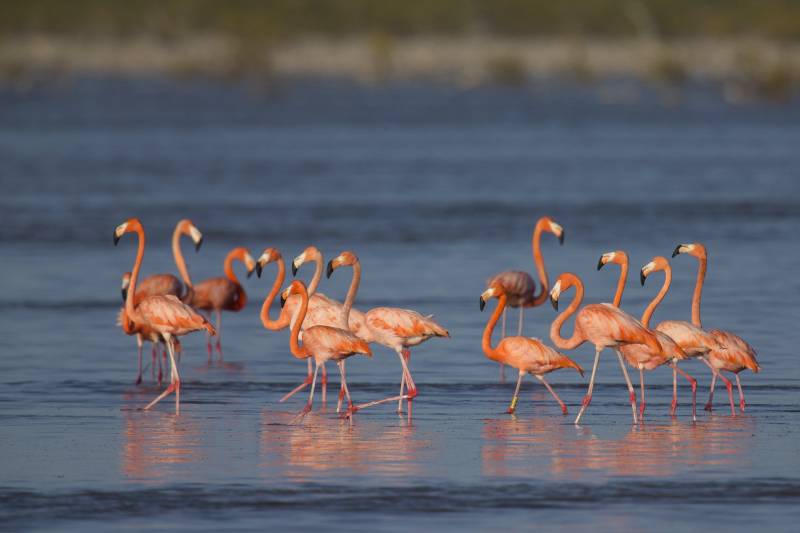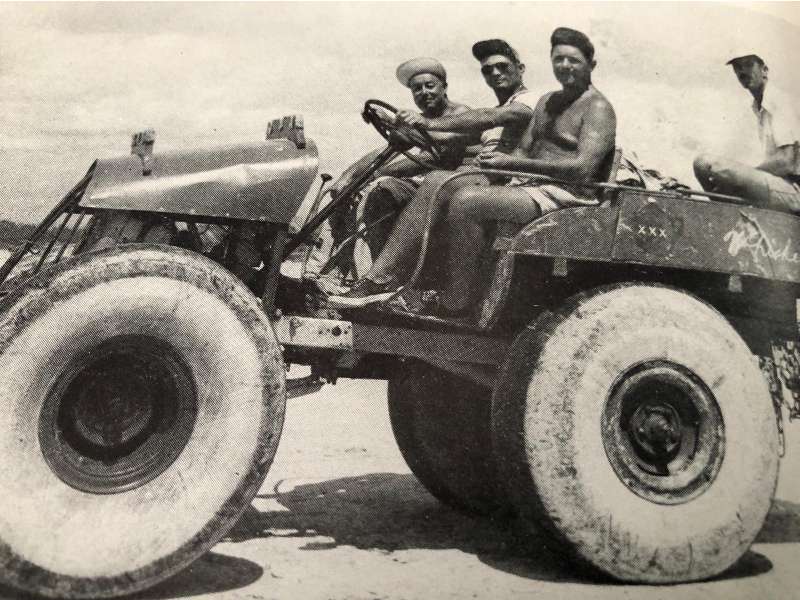Inagua National Park
est. 1965
About
Inagua National Park is located on Great Inagua, the southernmost island in The Bahamas. Established in 1965, the Inagua National Park encompasses 287 square miles of raw, tropical island beauty. The park is the site of the largest breeding colony of West Indian Flamingos in the world. This national bird of The Bahamas now numbers approximately 70,000 on Inagua after having made a forty-year journey back from the edge of extinction.

Bird Hotspot
This park has high bird activity.

Important Bird Area
This park is internationally recognized as an Important Bird Area.

Ramsar Wetland of Importance
This park has been included on the Ramsar list of Wetlands of International Importance.

Warden
This park has an active warden.

Wilderness
This park has little infrastructure and trail systems.
The Wild South.
While the environment of Inagua may be hostile to human habitation, it is perfect for birds and other wildlife. Many people travel to Inagua to see flamingos, but are surprised and delighted to see a multitude of other birds and wildlife as well. The native Bahama parrot, the endemic Inagua Woodstar Hummingbird, and many other unique bird species roam the interior of the island. Birds, however, are not the island and park’s only treasure. Wild Donkeys trot amongst the mangroves, freshwater terrapins inhabit the ponds, and bonsai forests grace its depths.
Morton salt company produces salt by solar evaporation in the vast flat salt pans or reservoirs that crisscross the Inagua landscape. It is a two-year process as seawater is gradually circulated from pan to pan. In time algae, fostered by the flamingo droppings, grows in the water and darkens it. This accelerates evaporation by absorbing more sunlight. Then the tiny brine shrimp begin feeding on algae cleaning the water. And the flamingos feed on the shrimp until the salt is ready for harvesting, leaving everyone tickled pink!
Inagua’s interior eventually gives way to Lake Windsor and it is here, among the cays and mangrove stands, that herons, egrets, spoonbills, pelicans, and many other birds can be found. A multitude of avifauna resides and/or winters in Inagua. The island truly is a birdwatcher’s haven.

History
The Greatest Bahamian Conservation Success Story.
The success of the Inagua National Park is evident in the restoration of the flamingo population of other Caribbean islands. Scientists are aware of the connection between Cuba and Inagua as well as healthy flamingo colonies on the Turks and Caicos Islands, Grand Cayman and other Bahamian islands. As early as 1905, concern for the West Indian flamingos in the Caribbean was intense. The flamingos were hunted for their meat and residents of islands close to nesting areas would raid the colonies, especially for the squabs. Flamingos were also hunted for their plumage. Wild pigs that were introduced by early settlers fed on the birds’ eggs and young, acquiring a taste for ‘flamingo’. Ironically the final blow was given to the flamingos by Royal Air Force Pilots, who took to buzzing the colonies for fun, sending flocks dashing for cover and permanently frightening some away.

West Indian Flamingo | Phoenicopterus ruber
By the 1950’s a close working relationship had been established between the National Audubon Society and The Bahamas. Concerned with the sudden decline in the flamingo population during the early years of that decade, Audubon sent its then research director, Robert Porter Allen, to Inagua in an attempt to prevent the birds’ fast approaching extinction. Allen arrived in Inagua in the spring of 1952. Sam Nixon, the best hunter, and guide on Inagua took Allen to the Upper Lakes of Inagua where they found more than a thousand flamingos courting as Nixon had promised they would. The birds massed in a riotous courtship ritual of head-turning, wing flicking, and exaggerated strutting that Allen called “The Flamingo Quadrille”.

left to right | Ilya A. Tolstoy, Sam Nixon, Robert Porter Allen, Jimmy Nixon.
From this finding, the Society for the Protection of the Flamingo in The Bahamas was formed, made up of a number of American and Bahamian Conservationists. The new society appointed Sam Nixon as the first flamingo warden on Great Inagua. Later in 1952, Jimmy Nixon became his assistant. Allen designed and built a little camp on Long Cay and named it after Author Vernay, the first president of the new Society.

Henry Nixon | Inagua Senior Park Warden
Another positive step was the creation of the Bahama National Trust by an Act of Parliament in 1959. As the official organization responsible for wildlife protection and national park management, the Trust took over the work of of the protecting the flamingo from the old society. The Trust, learning a lesson from the disappearance of the flamingos from Andros, made the air space above the Inagua National Park a restricted zone, with flights not being allowed below an altitude of 2,000 feet.
Today, the BNT warden Henry Nixon, direct descendant of Sam and Jimmy Nixon, patrols the park and protects the flamingos.


